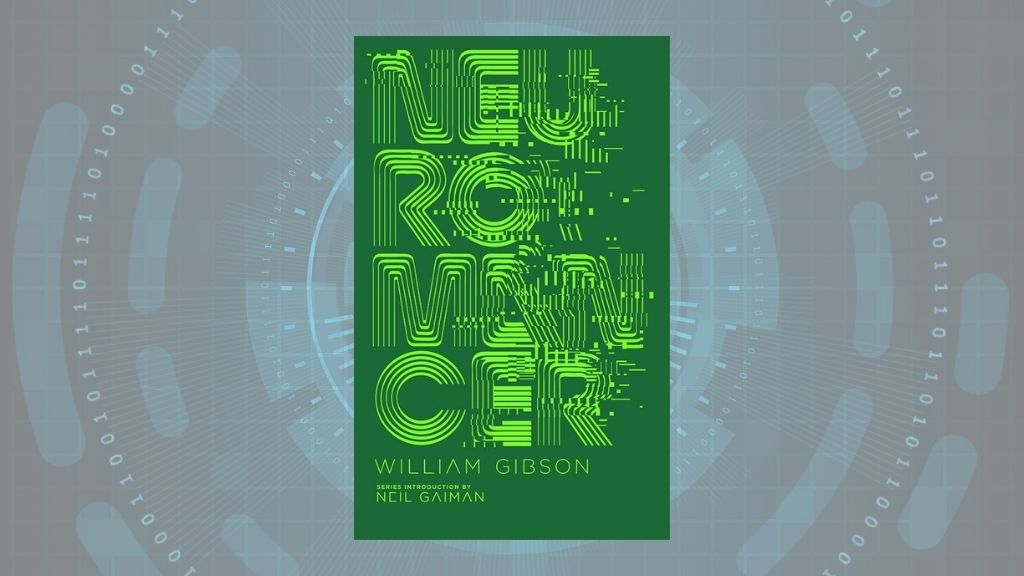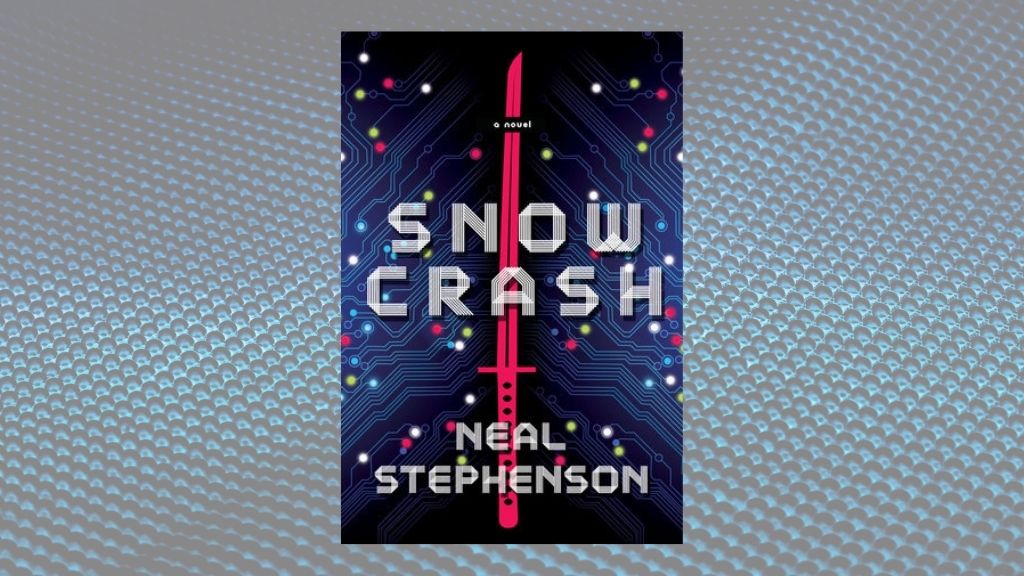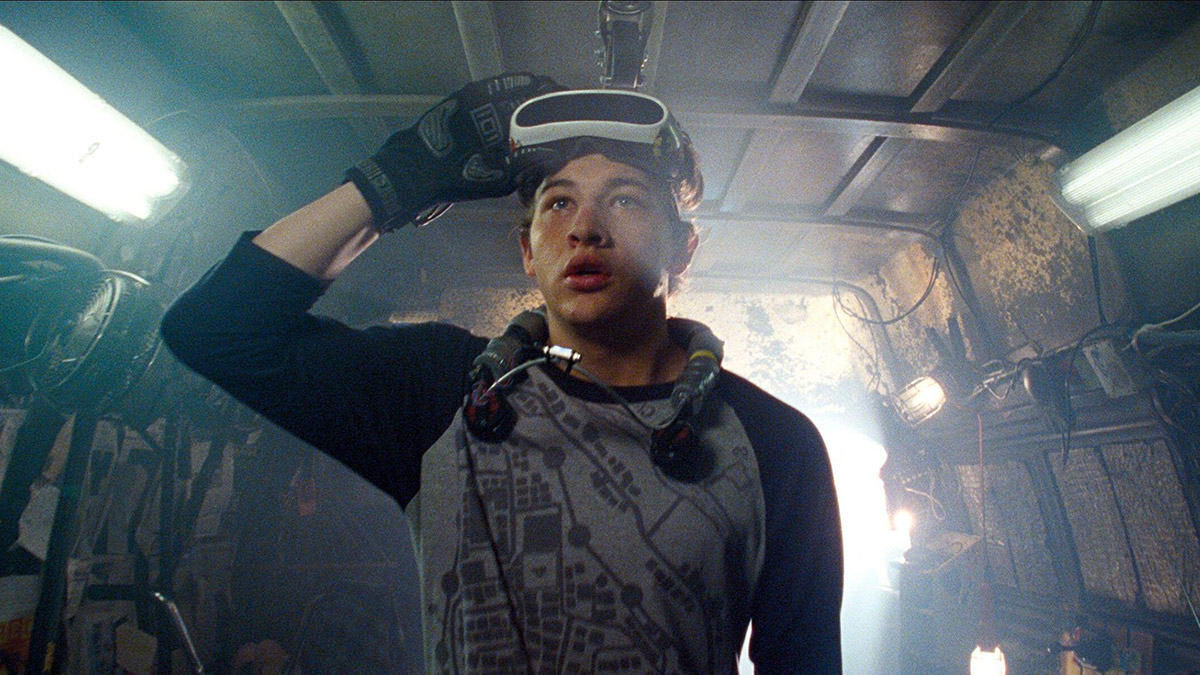What do we mean by the metaverse? Our vision of shared, real-time, persistent, virtual worlds has been shaped by popular culture, from Neal Stephenson’s use of the phrase in novel Snow Crash, to The Matrix and Ready Player One.
Our era of connectivity seemed impossible even just a few years ago. But as you’d expect from a genre powered by ideas, science fiction has been imagining the dramatic potential of virtual worlds for decades.
In fact, we ran a panel discussion about the metaverse in science fiction! Watch it free in our Streams video section.
Meanwhile, we’ve picked 10 of the best descriptions of the metaverse from movies, TV and books. Here you’ll see some of the most ambitious visions of the future, in which humans, games and technology merge together. But be warned, not all of them end well for the people who hook up to their machines…
These are presented in alphabetical order. Have a favourite that we’ve missed? Email us at [email protected]
Tron (1982)
Disney’s early-’80s journey inside a computer mainframe may be more memorable for its visuals than its plot, but it remains one of cinema’s most innovative explorations of a metaverse-type environment. When Kevin Flynn (Jeff Bridges) realises that computing giant ENCOM’s Master Control Program isn’t entirely trustworthy, the MCP transforms him into computer code and traps him in cyberspace. Why the inside of a computer would fashion itself as a neon-drenched universe populated by warring sprites with a penchant for death-defying lightcycle races remains a mystery, but the movie does work within its own bizarre logic. And this tech world continued to evolve spectacularly in beautiful – but emotionally flat – 2010 sequel Tron: Legacy.

Neuromancer (1984)
When you look up “seminal” in the dictionary, William Gibson’s groundbreaking, multi-award-winning book should probably appear in the definition. The definitive cyberpunk novel features seen-better-days computer hacker/”console cowboy” Henry Case taking on the quintessential “one last job”, hooking up to a virtual-reality metaverse known as the “matrix”. Still incredibly influential, echoes of Neuromancer’s futuristic vision and style can be seen in both fiction and the real world. Ironically, watching the first 20 minutes of Blade Runner made Gibson believe his embryonic novel was “sunk”, but when it comes to iconic sci-fi of the 20th century, Neuromancer deserves to be mentioned in the same breath.
Red Dwarf: Back To Reality (1992)
Virtual reality worlds have made regular appearances in the long-running sci-fi sitcom since its early days, from the gaming simulation of “Better Than Life” to the faux-Wild West of “Gunmen Of The Apocalypse”. But Red Dwarf’s most intriguing twist on a metaverse comes in series five classic “Back To Reality”. When their shuttlecraft, Starbug, crashes on a strange planet, Rimmer, Lister, Kryten and the Cat wake up to discover that their time on Red Dwarf was actually part of a Total Immersion Videogame – and they were really bad at it. While it eventually turns out that the dystopian alternative world they discover is the real illusion, the idea that the Dwarfers’ entire lives have taken place inside a sophisticated game is one of pop culture’s cleverest (and most poignant) takes on the metaverse.

Snow Crash (1992)
Neal Stephenson’s classic science fiction novel is widely credited with coining the word “metaverse” – a conjunction of meta (meaning beyond) and universe. Written years before humans communicating with each other online became commonplace, Snow Crash imagines a 21st century where giant corporations have more power than countries (sound familiar?), and humans hook themselves up to a shared virtual space where they can interact with each other as digital avatars. It’s so influential that Stephenson has since been hired as a futurist for genuine companies such as Blue Origin and Magic Leap.
The Matrix (1999)
When the machines take over planet Earth in The Terminator, you know they’ll only be satisfied when every last human is dead. Their AI counterparts in The Matrix take a different approach, however, turning us into batteries while keeping us docile inside a complex simulation. It perhaps says a lot about the flawed nature of the human race that the Architect’s original vision for a “perfect” world was a “monumental failure”, prompting the machines to imprison us in a recreation of a late 20th century where the Nokia 8110 “banana” phone is the height of cool. And yet for anyone who truly understands what the Matrix is, there’s loads of potential to bend the laws of physics – and take your kung-fu skills to the next level.
Star Trek: Voyager: Unimatrix Zero (2000)
Forget the Klingons. The Borg are the greatest villains in the history of Star Trek, thanks to their relentless efforts to assimilate everyone they encounter and remind them that “resistance is futile”. While the Borg peddled the company line that every drone acted within a single hive mind, however, Voyager revealed that some Borg had gone solo, creating a resistance movement inside the so-called “Unimatrix Zero”. This detailed metaverse allowed drones to exist as individuals away from the Collective, and was only accessible to them during their regeneration cycles (aka sleep) – a utopian home from home for their resting minds.
Doctor Who: Silence In The Library & Forest Of The Dead (2008)
Doctor Who has spent nearly six decades exploring every corner of time and space, so it’s no surprise that the TARDIS has taken a detour to a metaverse. In David Tennant-starring two-parter “Silence In The Library”/”Forest Of The Dead”, the Doctor and his companion Donna Noble land in a 51st-century library that’s home to every piece of information in the universe – but is completely deserted. It turns out that – spoilers! – after flesh-eating shadows the Vashta Nerada took up residence, the computer’s hard drive “saved” the humans into a virtual paradise. This literary metaverse is the final resting place of River Song, the time traveller who goes on to experience a back-to-front relationship with the Doctor.
By the way, the creators of the Doctor Who game delivered a video talk about their transmedia work, and you can watch that free on this site.
Wreck-It Ralph (2012)
What do videogame characters get up to when they’re not running, jumping and shooting for a player’s entertainment? This Disney animation plays like a mix of Tron and Toy Story as it wheels out cameos from famous gaming icons in industrial quantities – everyone from Q*Bert to the stars of Street Fighter. It turns out that when arcade machines are switched off at night, all the characters mingle in an intricate cyberspace where zeros and ones are given tangible, visually appealing form. 2018 sequel Ralph Breaks The Internet applies a similarly metaversal approach to the world wide web, as hero Ralph and best friend Vanellope von Schweetz embark on a surprisingly perilous online shopping adventure.
Ready Player One (2011/2018)
While the human race is forced to live in the metaverse in The Matrix, in hit 2011 novel Ready Player One, they spend their time in a virtual reality simulation by choice. And it’s easy to understand why, seeing as the OASIS (the Ontologically Anthropocentric Sensory Immersive Simulation) – essentially a totally immersive evolution of the internet – allows you to do and be pretty much anything you can dream of. It’s also an excuse for the ultimate celebration of geek culture, as an elaborate quest set by the OASIS’s late creator, James Halliday, gets the entire planet nerding out on Dungeons & Dragons and Monty Python. Steven Spielberg turned the story into a movie in 2018, but exorcised the book’s numerous references to his own back catalogue.
The “real world” in Ready Player One is definitely a dystopia, a topic Bushra Burge covered in one of our recent video sessions.
Rosewater (2018)
Although our current ideas of the internet are based around microchips and wires, that won’t necessarily be the case forever – indeed, Tade Thompson’s Arthur C Clarke Award-winning Rosewater (and subsequent books The Rosewater Insurrection and The Rosewater Redemption) imagine something a little more telepathic. The series is set in Nigeria in 2066, after the arrival of a species of aliens who don’t chat in the conventional sense – they have created a communications network of fungal spores known as the “xenosphere”. Some humans, known as “sensitives”, develop the ability to access this telepathic cloud, in an incredibly imaginative vision of a shared metaverse.
A self-confessed full-time geek, freelance journalist Richard has spent most of his career writing about sci-fi and fantasy – including more than a decade on staff for SFX magazine. He's particularly keen on franchises with "Star" in the title.



































